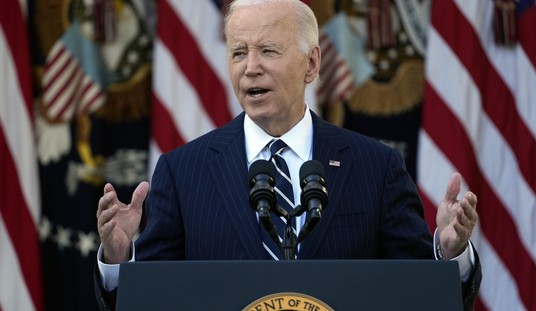“Unnecessary, unwarranted and unwise.” That’s how Daryl G. Kimball, executive director of the Arms Control Association, described it when President Bush announced that the United States would withdraw from the Anti-Ballistic Missile Treaty. The arms-control crowd seemed certain that our “go-it-alone” attitude would only antagonize Russia, China and all of Europe, leaving us without a friend in the world.
Today, 10 years after our withdrawal became official, we can see that these dire predictions were wildly overblown. In fact, the ABM Treaty was making the world arguably less safe by enshrining the doctrine of Mutually Assured Destruction (MAD, aptly enough). The idea was that neither the U.S. nor the Soviet Union would launch a missile attack if it knew it would suffer a devastating retaliatory strike.
Only by the most generous definition of the term could such a stalemate be considered “peace.” With both sides officially prohibited from building a missile defense, an arms race was the natural result. The only way in that situation to keep the other guy from firing first: maintain missile superiority -- and that meant building more and more of them. You don’t shoot first if you think you’ll be immediately wiped out in return.
But what about the possibility of accidents? What about the cost of building and maintaining larger and larger arsenals of long-range weapons? Clearly, the ABM Treaty was not cultivating peace, but maintaining an uneasy status quo: a Cold War that could turn hot at the press of a button.
Barely a decade after the pact was signed in 1972, President Reagan realized that this situation was untenable -- and that the MAD doctrine that inspired it was blocking the road to the more reliable peace that could flow from weapons reduction and missile defense. He became the first U.S. president to decry its faults and declare that America needed out of it.
Recommended
So the Strategic Defense Initiative (SDI) was born. President Reagan’s determination to build a missile shield that the Soviet Union knew it couldn’t afford to match or counteract was one of the key reasons the Cold War ended as it did. Why settle for standoffs such as the Cuban Missile Crisis when you can achieve an actual victory?
As the Independent Working Group, which included a wide range of missile experts, concluded in a 2009 report: “The enduring lesson of the ABM Treaty era is that the absence of defenses, rather than their presence, empowers the development of offensive technologies that can threaten American security and the lives of American citizens.”
However, the victory that the U.S. achieved in the Cold War is by no means permanent if we’re unwilling to construct the missile shield President Reagan envisioned. We have a rudimentary system in place today -- some long-range, land-based interceptors and shorter-range ones mounted on ships at sea. But it’s nothing like the comprehensive, multi-layered system we would need to take down a missile at almost any stage of flight.
Unfortunately, the Obama administration is chronically underfunding missile defense. Indeed, it should increase overall funding for the missile-defense program in the next fiscal year to $11 billion. That’s a lot of money, to be sure. But what can be more important than making sure our national defenses are as capable as possible? Especially when countries such as Iran, China and North Korea are busily expanding their nuclear-missile capabilities.
Today, a full decade after we ditched the shackles of the ABM Treaty, we should be much further along in developing the kind of land-, sea- and space-based missile defense needed to keep ourselves safe against modern threats.
The era of MAD is long over. It’s time to pursue whole-heartedly the sanity of comprehensive missile defense.

























Join the conversation as a VIP Member